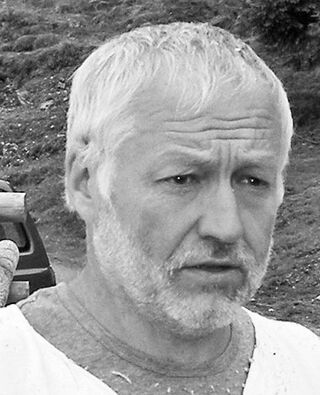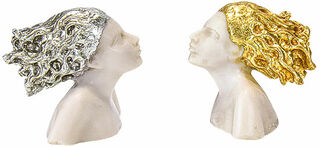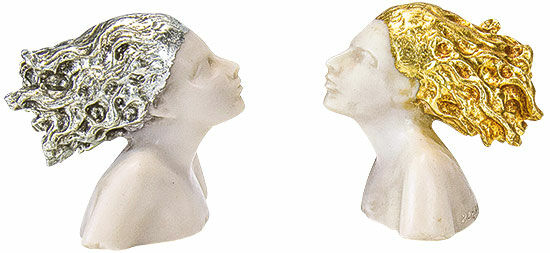Set of two miniature busts "Vision"
Set of two miniature busts "Vision"
Quick info
ars mundi Exclusive Edition | signed | cast | silver-plated or gold-plated | size 7 x 7.5 x 8 cm (h/w/d) each
Detailed description
Set of two miniature busts "Vision"
It was the visionary art of the Renaissance that inspired sculptor Roman Johann Strobl to create this little girl's bust during a stay in Tuscany.
Stone mass, cast by hand. Hair gilded or silver-plated with metal leaf. Signed. Size 7 x 7.5 x 8 cm (h/w/d) each. ars mundi Exclusive Edition.
Set includes both sculptures.
This set contains the following products

About Roman Johann Strobl
Born in 1951, Austrian sculptor
The sculptor and painter Roman Johann Strobl, who lives in Going am Wilden Kaiser, has made a name for himself among art collectors and gallery owners above all with his wooden sculptures, which are filigree, expressive and cheerfully dynamic. He has attracted public attention for his redesign of the German film award "Lola" and portraits of the former Chancellor of Germany Gerhard Schröder, among others.
The Austrian was born in 1951 and grew up in a traditional woodcarving family. Already at the age of 14, he learned the woodcarving trade in his father's workshop. To deepen his skills, Strobl studied sculpture under Professor Sebastian Cosamale in Todi, Italy. This was followed by numerous journeys to the Middle East, India and the roots of Greek mythology on Crete, which provided the artist with lasting inspiration for themes for his sculptural work.
Strobl experimented with a wide variety of techniques and materials for a long time. However, stone sculpture slowly became the focus of his artistic work. In 1997, he finally turned back to wood as a means of expression. But no longer with the carving knife but with the electric chainsaw with which he creates his objects with incredible precision like no other.
Strobl's oeuvre includes sculptures in wood, marble and stone. Moreover, he created a series of expressive picture cycles on canvas and drawings. Since the mid-1980s, his works have been regularly represented at exhibitions in Germany and Austria. His sculptural work is presented in public spaces ("Kunst am Bau") on buildings in Munich, Hanover and in Austria. Strobl has also appeared in chainsaw performances, including in the Austrian pavilion at EXPO 2000 in Hanover and Ahrensburg (2001), where he portrayed the Italian sculptor Bruno Bruni.
Sculptural representation of person's head and shoulders.
Graphic or sculpture edition that was initiated by ars mundi and is available only at ars mundi or at distribution partners licensed by ars mundi.
Collective term for all casting processes that ars mundi carries out with the help of specialised art foundries.
Stone casting
Similar to artificial marble, with the difference that the substitute stone in powder form is used instead of marble powder.
Bonded Bronze (Cold-Cast-Bronze)
Bronze powder is polymer-bonded. Special polishing and patination techniques give the surface of the casting an appearance similar to the bronze.
Imitation Wood
In order to guarantee absolute fidelity to the original, an artificially manufactured imitation wood is used as a base material that features typical wood characteristics: density, workability, colour and surface structure.
Ceramic Mould Casting
Ceramic mould casting usually requires the use of casting clay, which is then fired and optionally glazed. Instead of the usual rubber moulds, plaster moulds are often used in ceramic casting and porcelain production.
Cast Bronze (Lost-Wax Casting)
For the cast bronze, the thousand-year-old lost-wax technique is used. It's the best, but also the most complex method of producing sculptures.
A plastic work of sculptural art made of wood, stone, ivory, bronze or other metals.
While sculptures from wood, ivory or stone are made directly from the block of material, in bronze casting a working model is prepared at first. Usually, it is made of clay or other easily mouldable materials.
The prime time of sculpture after the Greek and Roman antiquity was the Renaissance. Impressionism gave a new impulse to the sculptural arts. Contemporary artists such as Jorg Immendorf, Andora, and Markus Lupertz also enriched sculptures with outstanding works.




